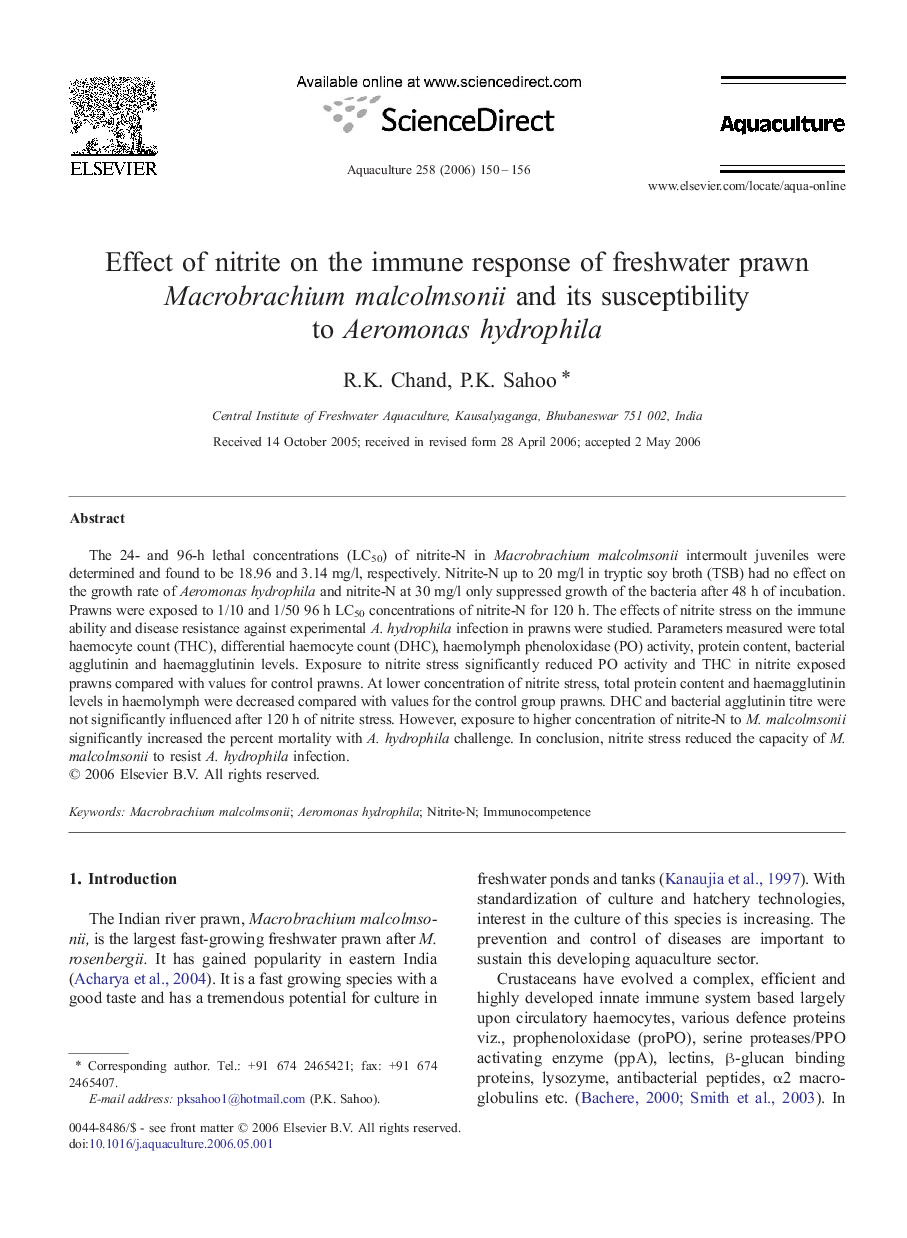| Article ID | Journal | Published Year | Pages | File Type |
|---|---|---|---|---|
| 2425824 | Aquaculture | 2006 | 7 Pages |
The 24- and 96-h lethal concentrations (LC50) of nitrite-N in Macrobrachium malcolmsonii intermoult juveniles were determined and found to be 18.96 and 3.14 mg/l, respectively. Nitrite-N up to 20 mg/l in tryptic soy broth (TSB) had no effect on the growth rate of Aeromonas hydrophila and nitrite-N at 30 mg/l only suppressed growth of the bacteria after 48 h of incubation. Prawns were exposed to 1/10 and 1/50 96 h LC50 concentrations of nitrite-N for 120 h. The effects of nitrite stress on the immune ability and disease resistance against experimental A. hydrophila infection in prawns were studied. Parameters measured were total haemocyte count (THC), differential haemocyte count (DHC), haemolymph phenoloxidase (PO) activity, protein content, bacterial agglutinin and haemagglutinin levels. Exposure to nitrite stress significantly reduced PO activity and THC in nitrite exposed prawns compared with values for control prawns. At lower concentration of nitrite stress, total protein content and haemagglutinin levels in haemolymph were decreased compared with values for the control group prawns. DHC and bacterial agglutinin titre were not significantly influenced after 120 h of nitrite stress. However, exposure to higher concentration of nitrite-N to M. malcolmsonii significantly increased the percent mortality with A. hydrophila challenge. In conclusion, nitrite stress reduced the capacity of M. malcolmsonii to resist A. hydrophila infection.
